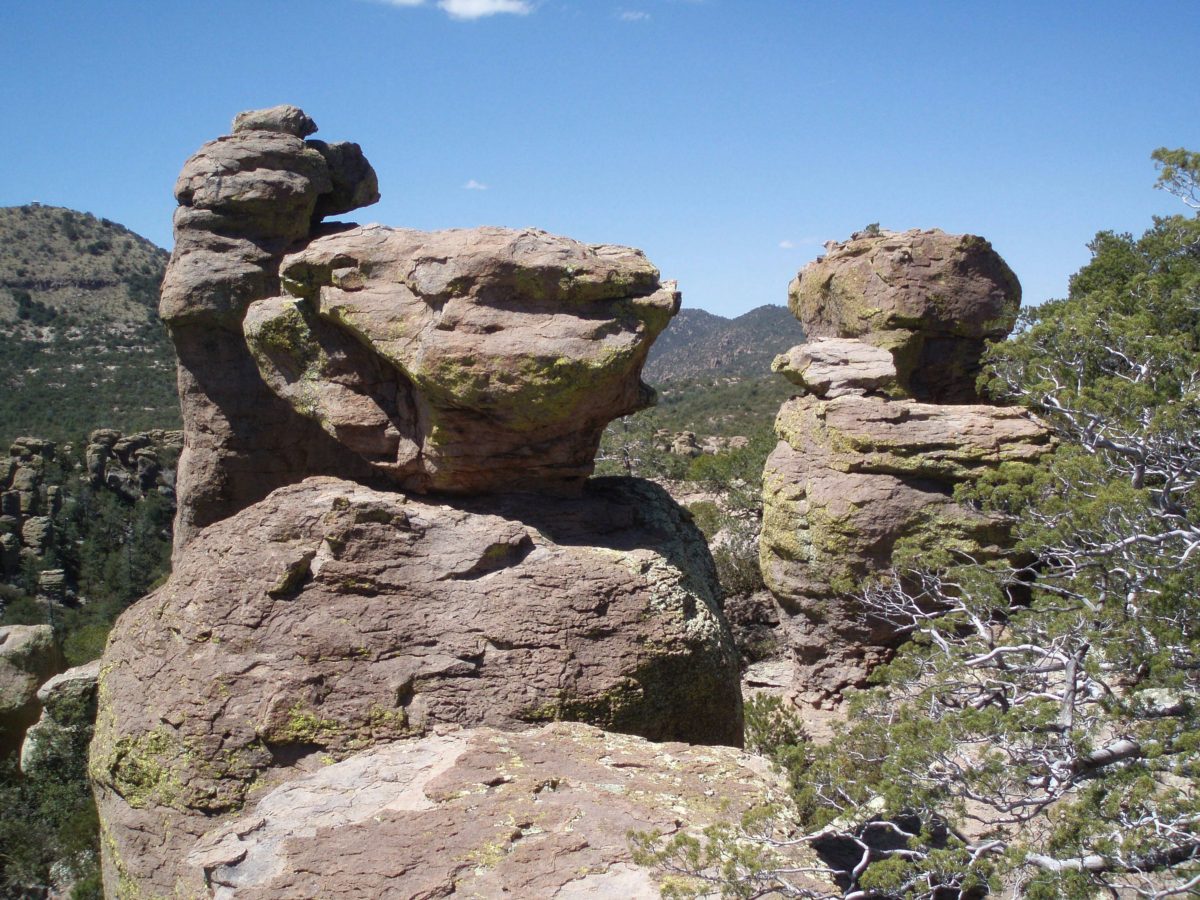By Alan K. Lee
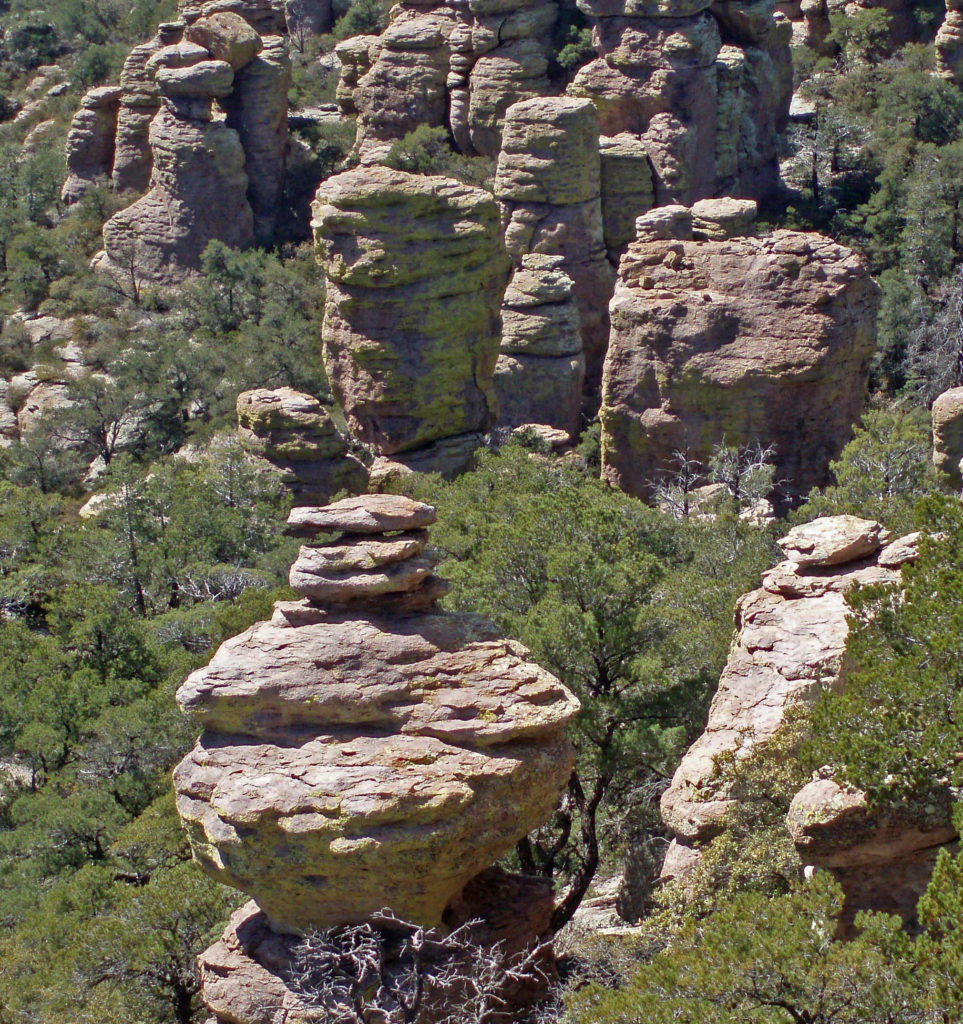
Chiricahua National Monument in the southeastern corner of Arizona is geological wonderland of rocks – hoodoos, balanced rocks, stacked rocks, rocks of all shapes and sizes.
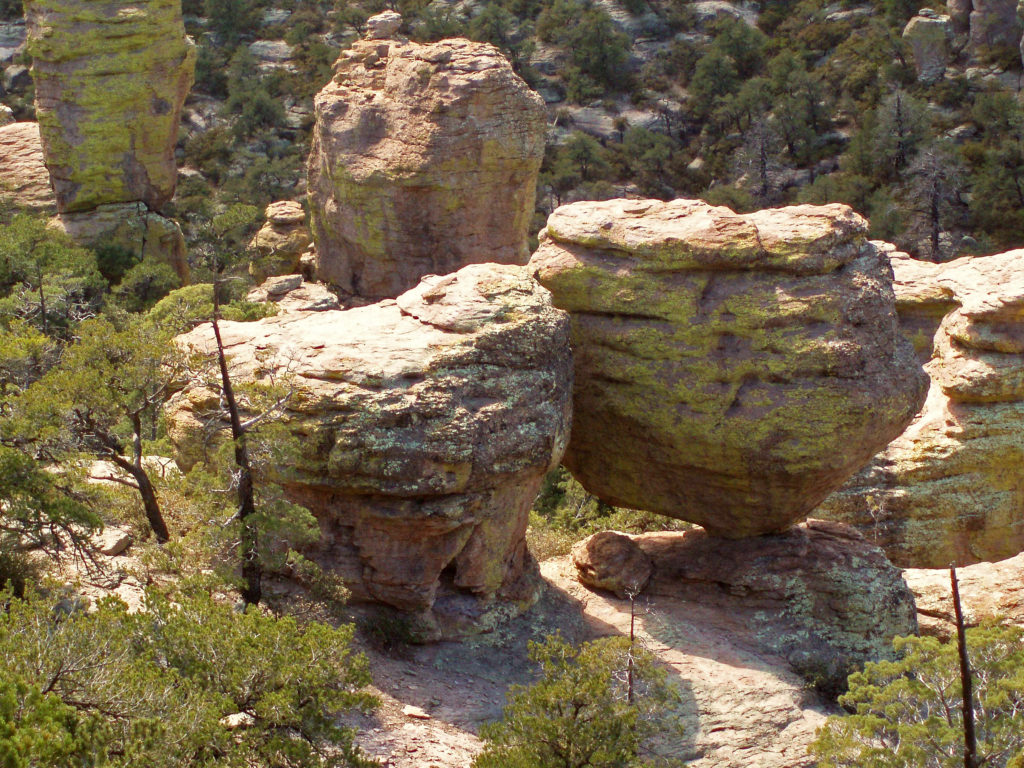
The Chiricahua Mountains are one of a number of mountain ranges known as “sky islands” that run from the Sierra Madre Occidental in Mexico to the Rocky Mountains. The rock that is the central feature of Chiricahua originated as pyroclastic flows from a massive volcano just south of the monument that erupted about 27 million years ago. It is estimated that amount of material ejected in that eruption was more than 100 times that of the 1980 eruption of Mount St. Helens.
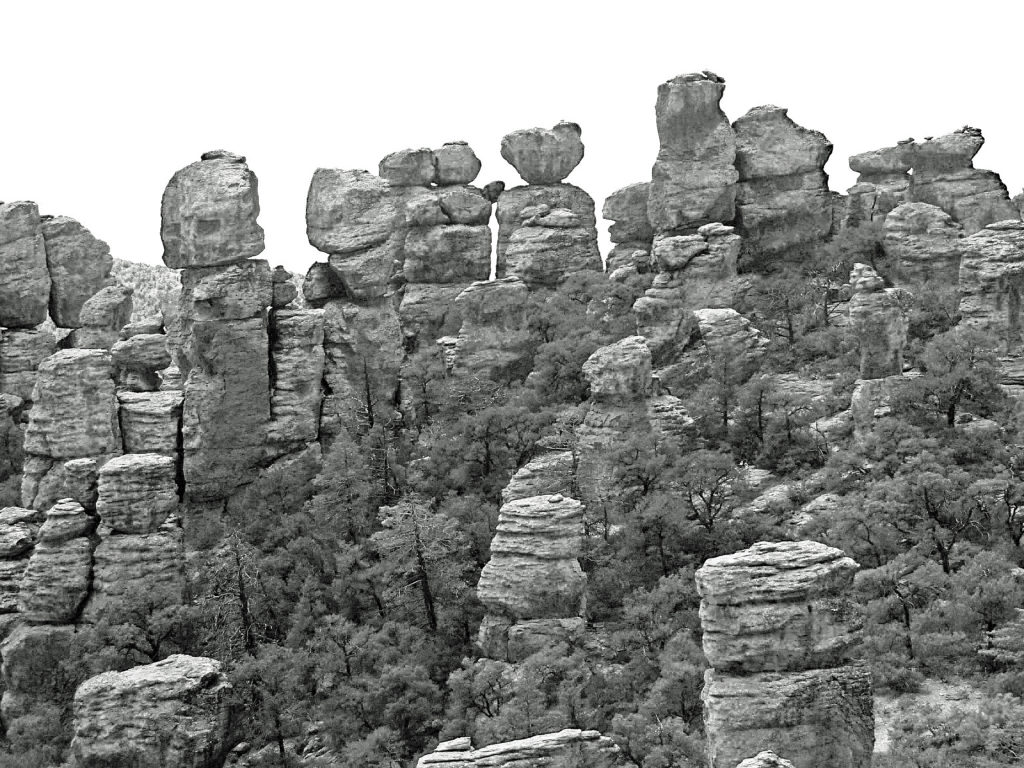
As with Bryce Canyon, the rock formations of the Chiricahua Mountains are more the result of wind erosion and the freeze-thaw cycle than erosion by running water.
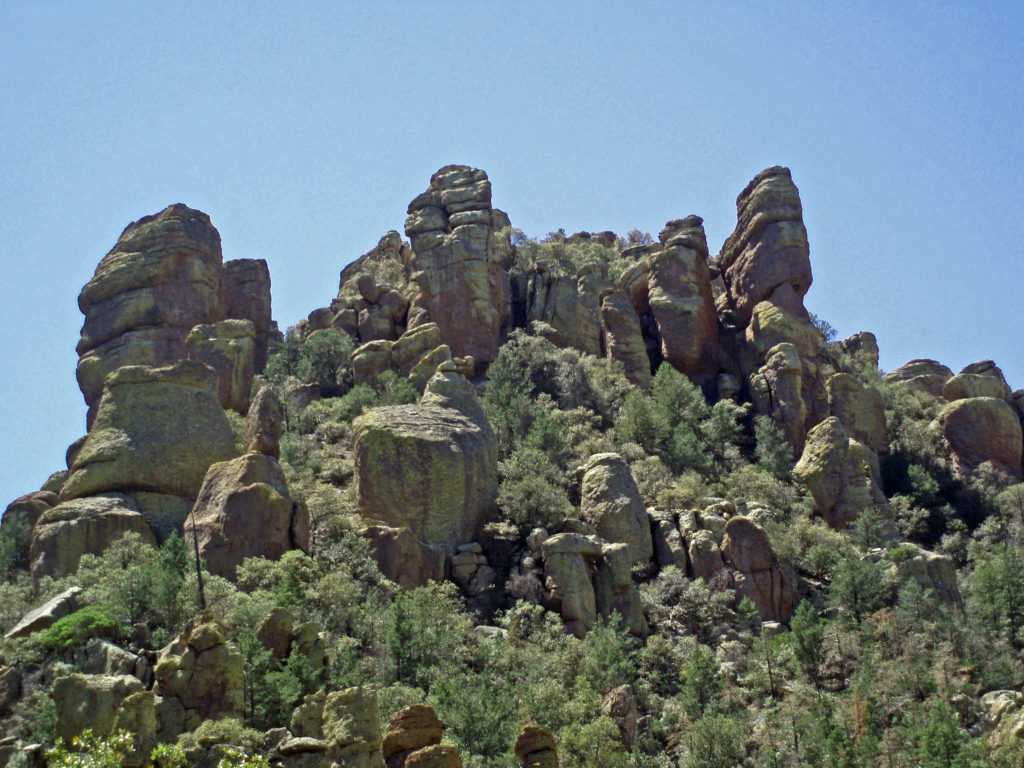
Chiricahua National Monument was created in 1924 to protect the fantastic rhyolitic tuff rock formations. The original monument was a little over 4200 acres in size. Additions in 1938, 1978, and 1984 brought the size of the monument to its current 11,985 acres. Most of the park (10,340 acres) is designated wilderness.
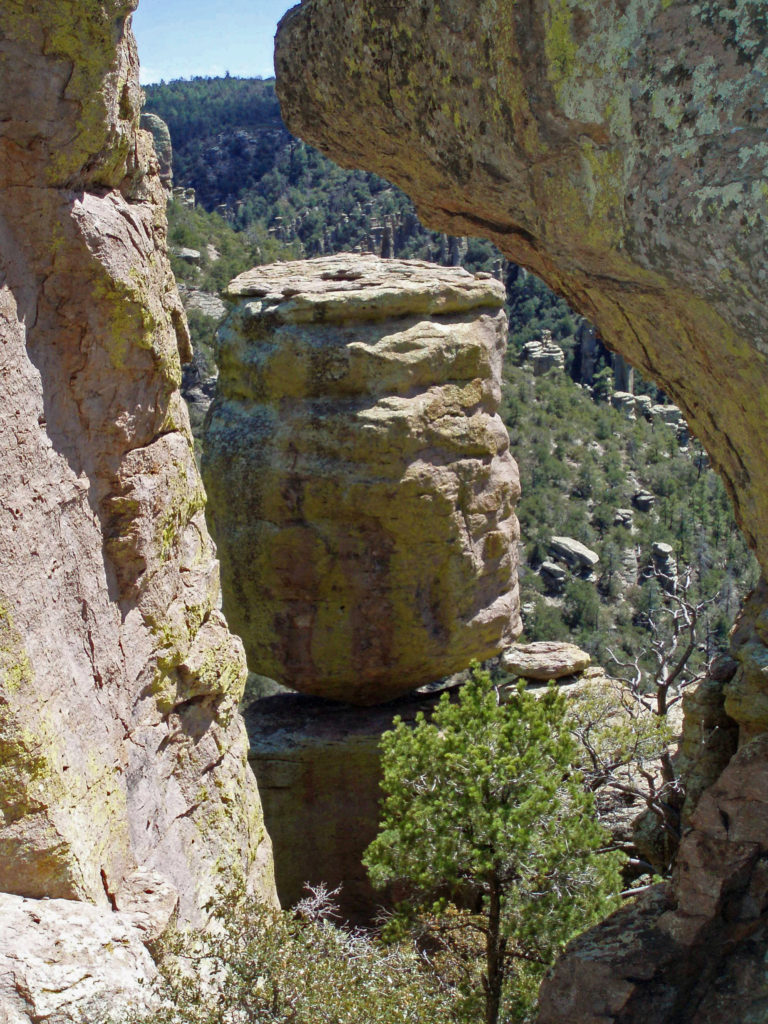
Although the altitude at Chiricahua (from 5100 to 7300 feet) makes it cooler than many parts of Arizona, this is still Arizona after all, and it can get dangerously hot. Triple digit temperatures are possible from May through September. And despite this being part of the Chihuahua Desert, thunderstorms are an almost daily occurrences from early July into early September. Almost half of the monument’s annual rainfall of 19.3″ falls in the months of July and August.
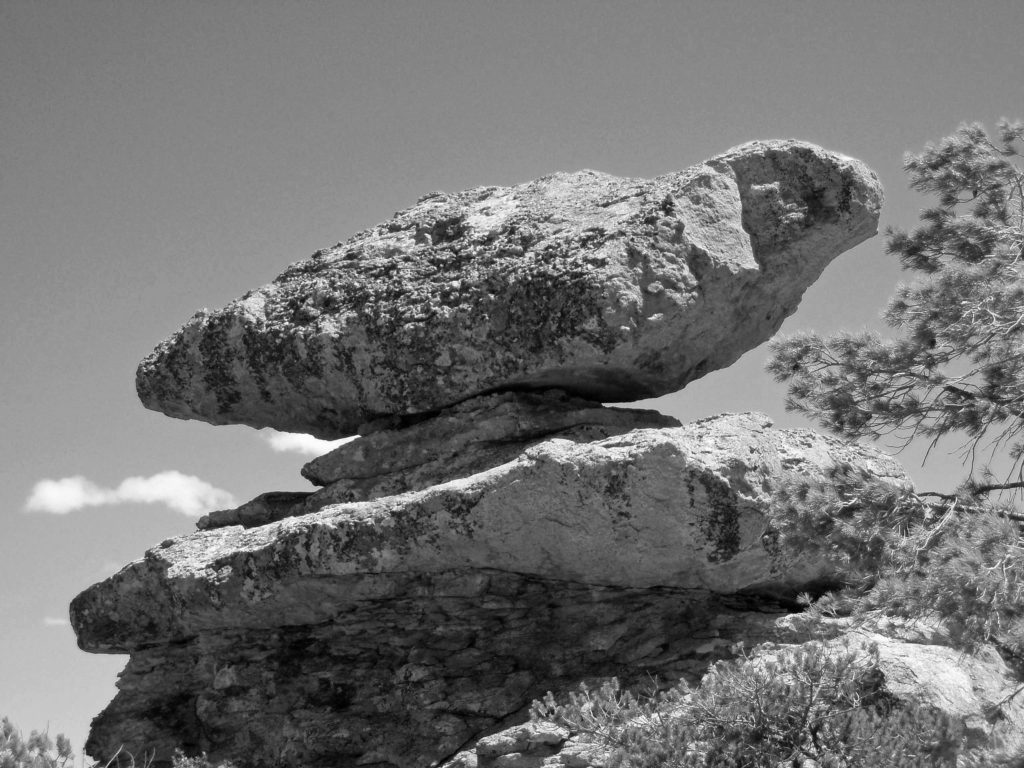
April and May and are the driest months, with daily high temperatures varying from the low 70s to the mid 80s, and spring is probably the best time to visit. The days are also pleasant from mid-September to mid-November, but rain is more common than in the spring. Winters are much cooler, with snowfall and sub-freezing temperatures common from December through March.
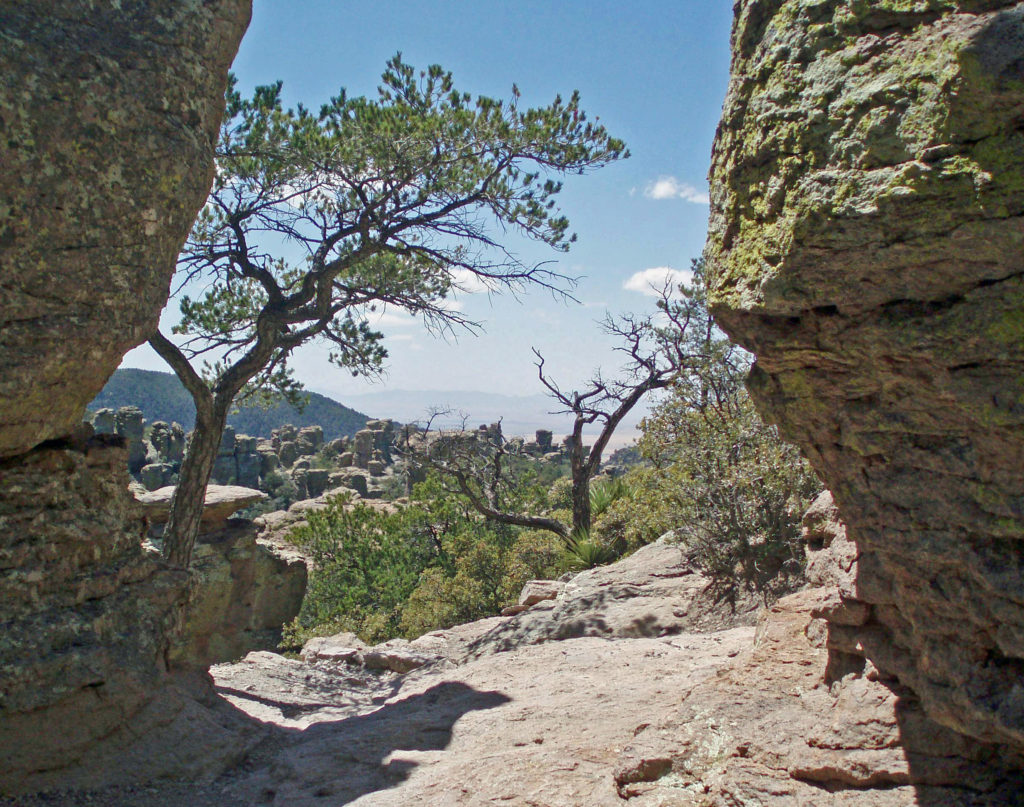
Hiking is a popular activity at Chiricahua. There are 17 miles of trails in the park, with hikes of various lengths, from 0.2 to 9.5 miles. Trails range in difficulty from easy saunters to strenuous hikes with elevation gains of up to 1000 feet. Horses are also permitted (with restrictions) on many of the trails. As elsewhere in Arizona, carrying enough water is essential. The park staff recommend hikers carry at least one quart for each hour they plan to be out during the summer months. Sunscreen and a hat are also essential, even in spring and fall.
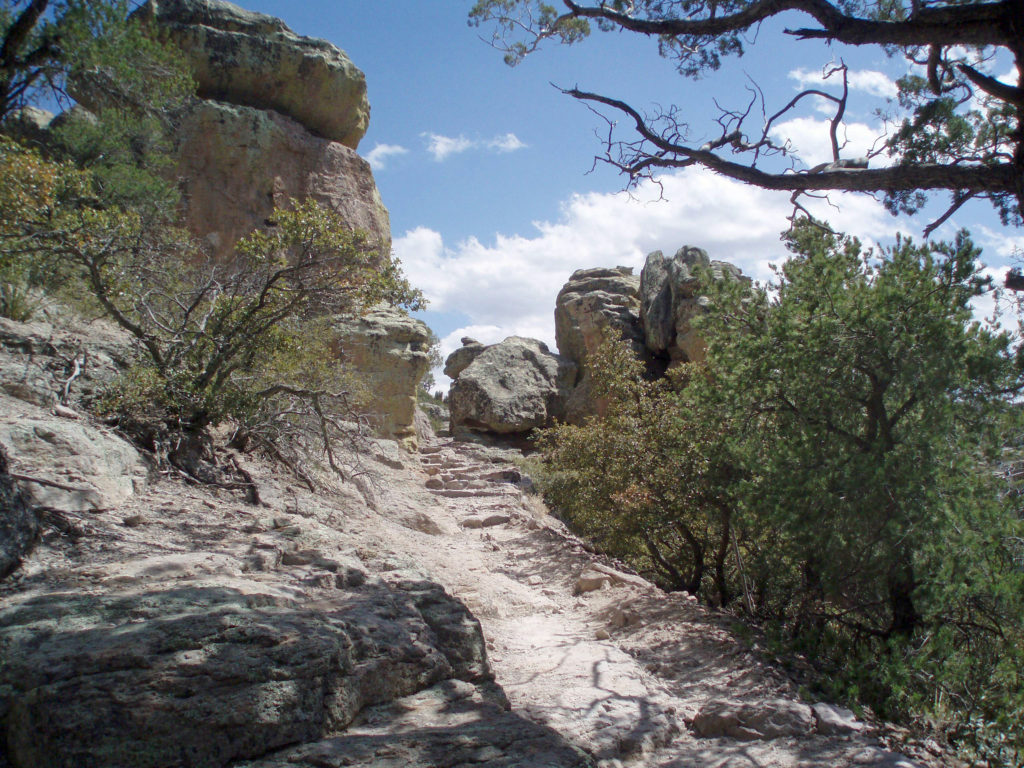
A free hiker shuttle runs from the visitor center to two of the more popular trailheads. Check in at the visitor center the day before or the morning of your hike to reserve a seat. The shuttle is limited to 14 people and reservations cannot be made on line or by phone.
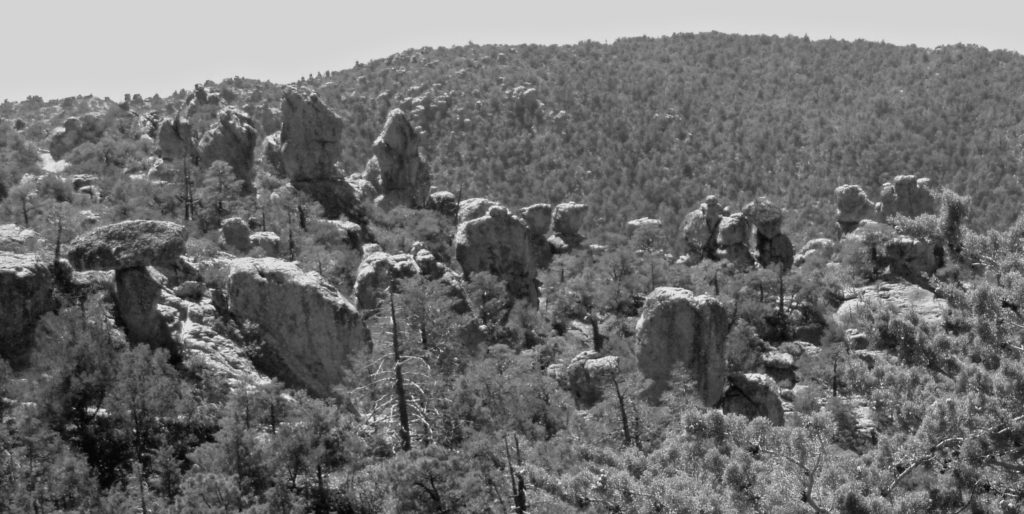
Bird watching is another popular activity at the monument. More than 170 species have been recorded within the monument boundaries, and the American Bird Conservancy has designated Chiricahua National Monument an Important Bird Area. (And the San Pedro Valley, an internationally known birding hot spot, is only about 75 miles to the west). The monument also is home to 71 species of mammals, 46 species of reptiles, 8 amphibian species, and uncounted numbers of insect species.
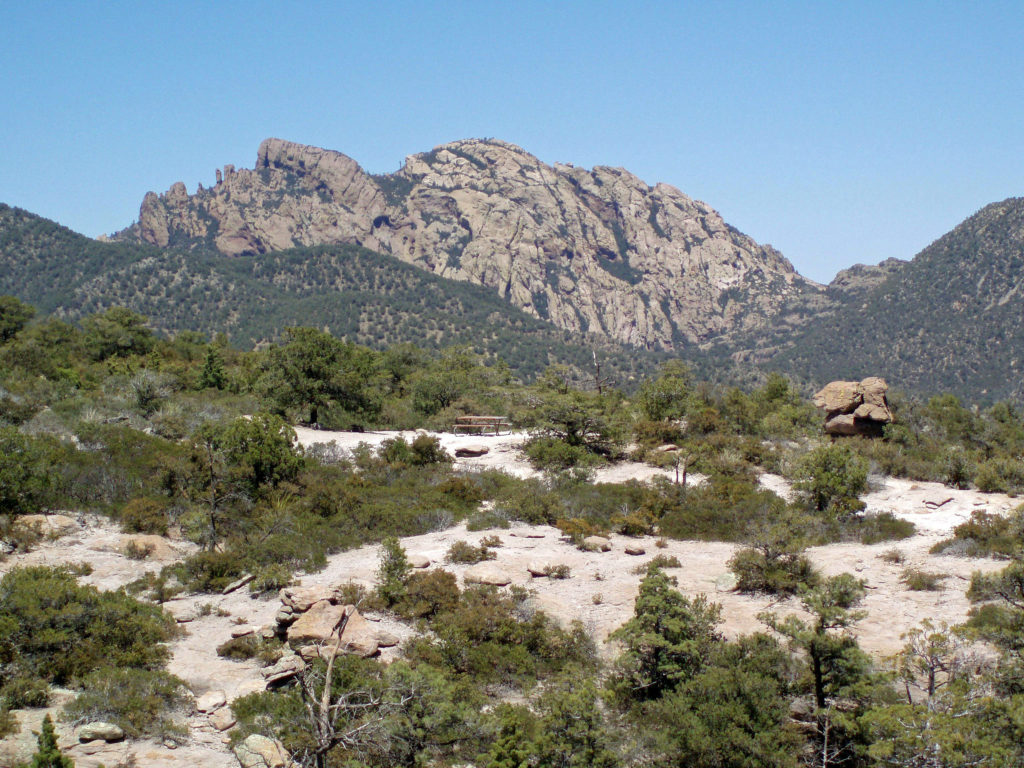
People interested in the history of the area should check out the historic Faraway Ranch, just off the main road near the park entrance.
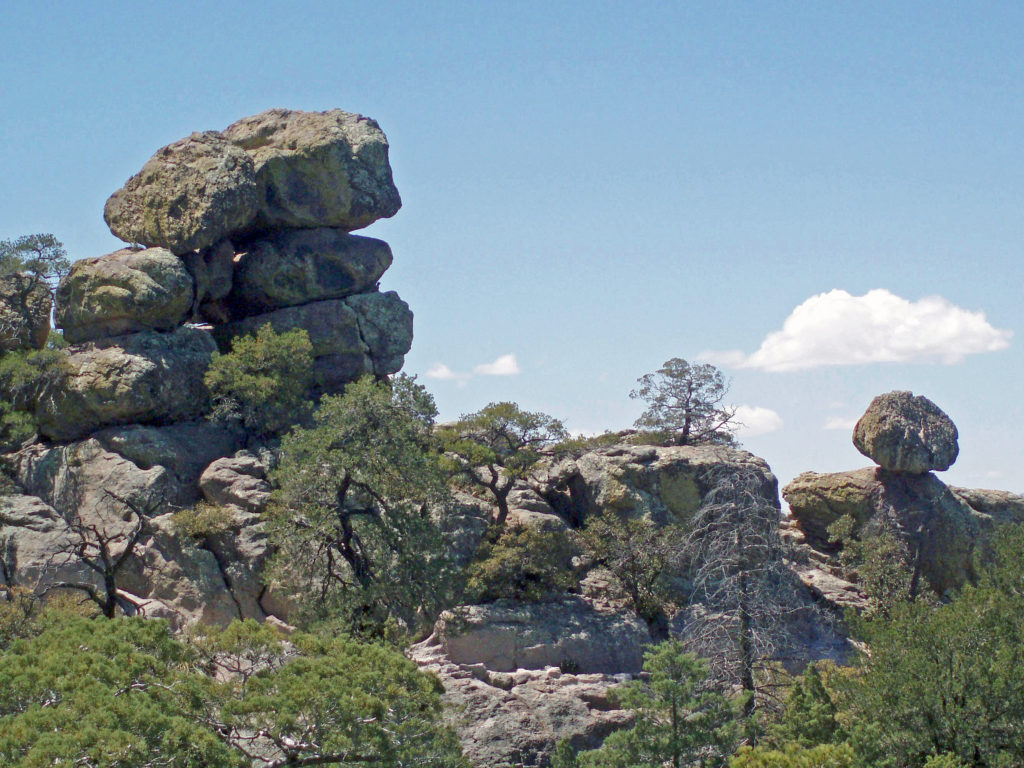
Chiricahua has never been a particularly popular place, owing mostly, I think, to its remote location and relatively small size. Even at the peak of its popularity, in 1993, it saw an average of only 350 visitations per day. In recent years the average has been about 150 per day. This is a place where it’s still possible to find some solitude, and it doesn’t take hours of hiking to find a quiet place to yourself.
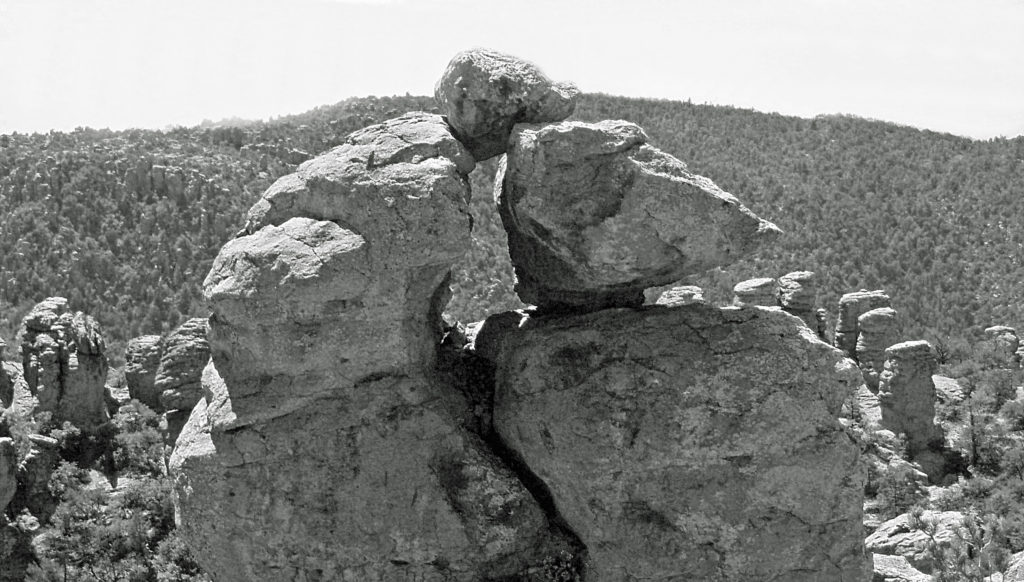
There is a 26 unit campground in the park, but no other accommodations. The campground can accommodate RVs up to 29 feet (several reviews suggested that 20 feet is a more realistic max, though). The campground has running water and flush toilets, there are no RV hookups. Wilcox, 35 miles to the northwest, has a number of RV parks with full hookups, and has a variety of other accommodations for those that do not want to camp.
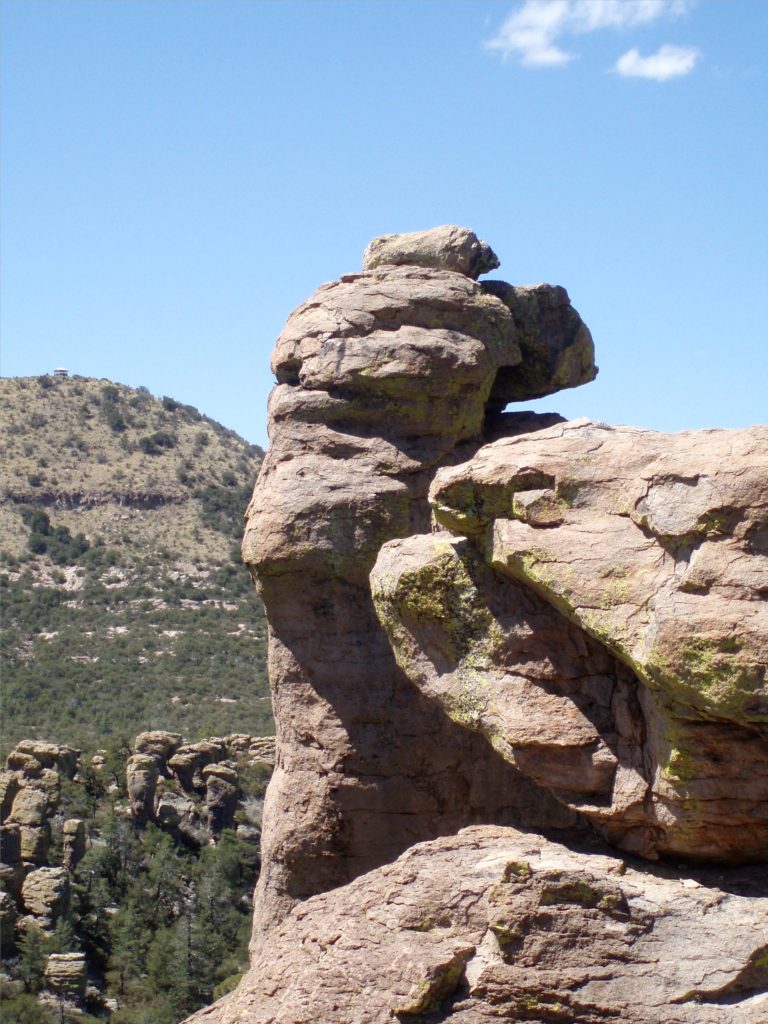
Chiricahua National Monument is not on a lot of people’s bucket lists, but it should be in my humble opinion. The scenery is outstanding, it’s a geologically interesting area, the biological mix of plant and animal species is interesting, and it’s unique. There’s no place else like it. It is well worth the 35 mile detour off of I-10 if you are traveling through the area, and is an end-point destination on its own that is worth considering. Combine a visit to Chiricahua with the many attractions in the Tucson area (only a two hour drive away), Karchner Caverns State Park, the old copper mining town of Bisbee, and the famous wild west town of Tombstone, to make a vacation the whole family will enjoy.
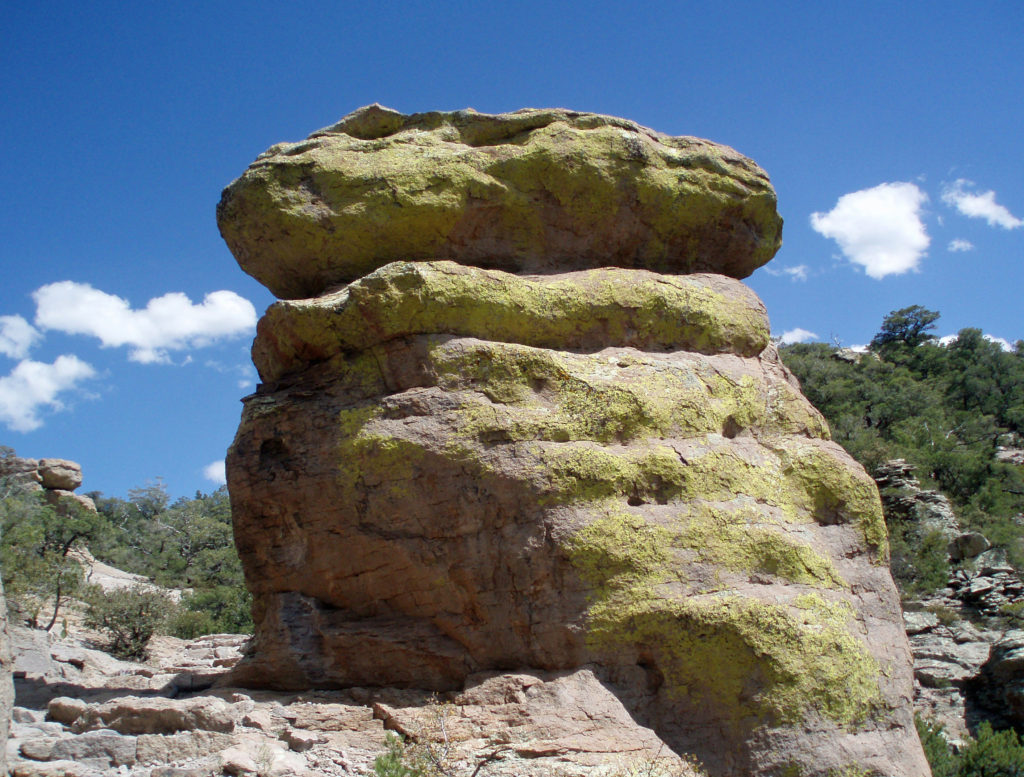
February 2022 update:
The visitor center is open daily from 8:30 to 4:30, but the museum exhibits are closed due to Covid-19. The hiker shuttle service is not operating, also due to Covid-19 protocols. Masks are required in all buildings and outdoor areas where social distancing is not possible. The historic ranch house at Faraway Ranch is closed for renovations. The campground is open. The park has experienced some storm damage and some of the roads may be closed temporarily, but the main road is open.
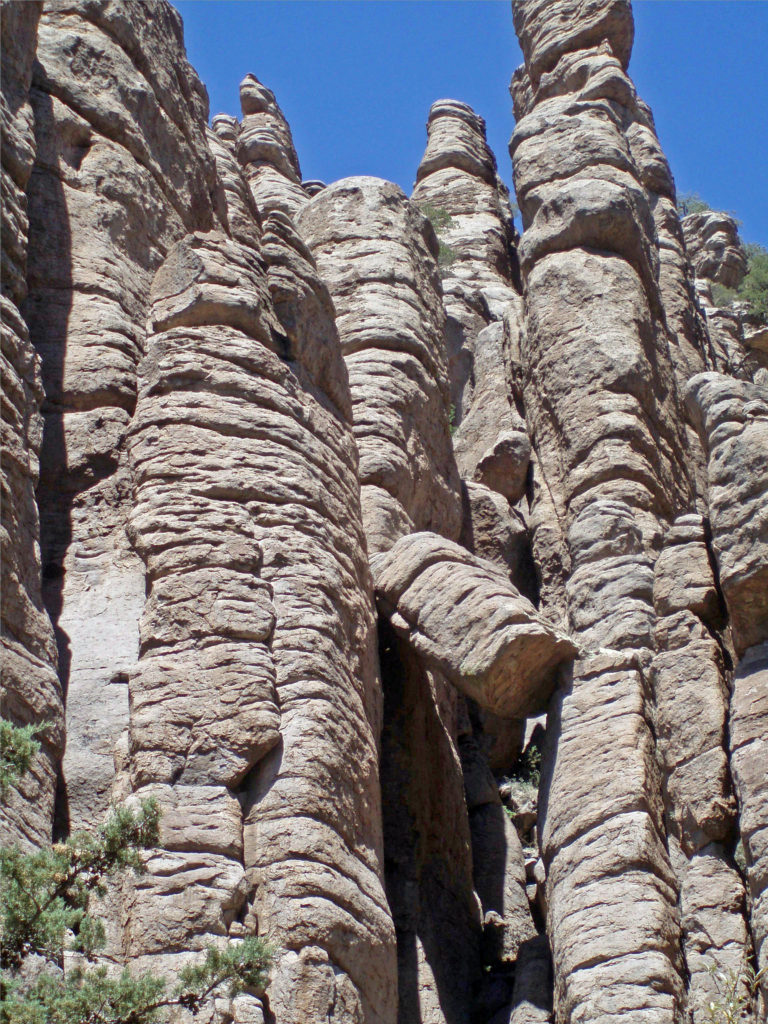 Originally posted April 28, 2020. Edited, updated, and re-posted February 5, 2022
Originally posted April 28, 2020. Edited, updated, and re-posted February 5, 2022
All photos © Alan K. Lee

